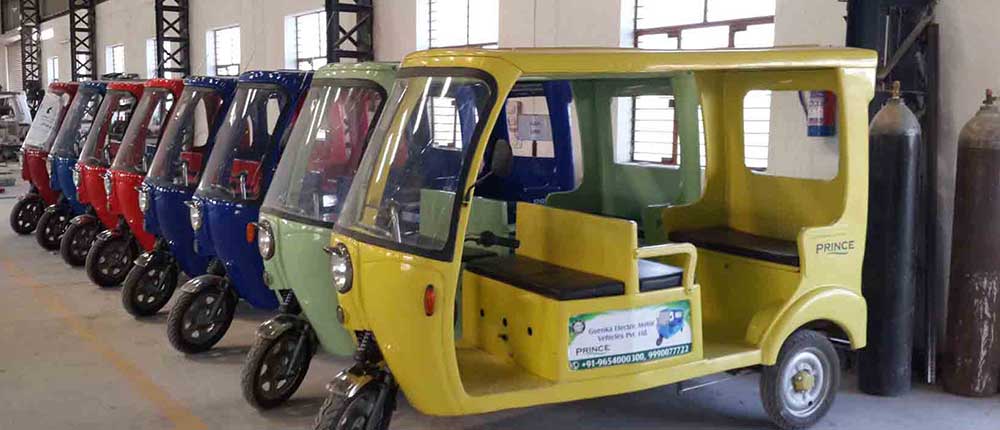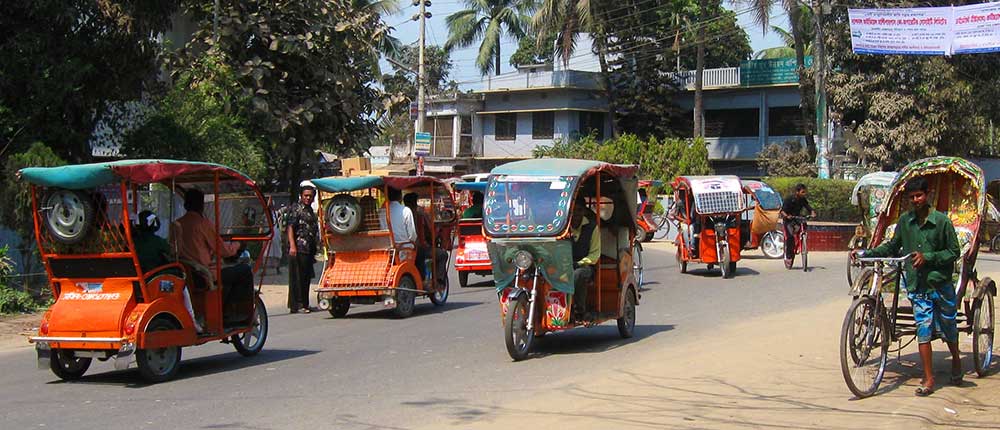 Long before the Government of India announced its intention to have an all-electric fleet by 2030; a three-wheeled retrofitted battery rickshaw was taking the Indian cities by storm. In 2016, in Delhi alone, the number of electric rickshaws plying on the roads was over 1,00,000. India has always been home to the largest market for three wheelers and similar modes, as they provide a much needed solution for motorized mobility, which is affordable and frequently available.
Long before the Government of India announced its intention to have an all-electric fleet by 2030; a three-wheeled retrofitted battery rickshaw was taking the Indian cities by storm. In 2016, in Delhi alone, the number of electric rickshaws plying on the roads was over 1,00,000. India has always been home to the largest market for three wheelers and similar modes, as they provide a much needed solution for motorized mobility, which is affordable and frequently available.
Initially launched in Delhi during early 2010 with an objective to eventually phase out physically taxing cycle rickshaws, the e-rickshaws presented themselves as an affordable and clean mode of mobility that had the immense potential of bridging the gap of first and last mile connectivity. In Delhi, these battery fitted three-wheelers were able to provide the much needed first and last mile access to Delhi Metro, which received a mixed response; while it was welcomed by the passengers, the lack of regulation triggered concern for the authorities. The e-rickshaws were also spreading to other Indian cities such as Lucknow, Amritsar, Ahmedabad, Kochi, etc. In case of cities like Gaya and Jamshedpur, the e-rickshaws provided a para-transit solution for connecting remote villages to cities. The spread and acceptance of the electric rickshaws became inevitable. TERI is also working towards encouraging and accelerating the adoption of four-wheeled passenger electric vehicles in India under 'Detailed Study on Promoting Electric Mobility in India'.
While e-rickshaws’ growth was sporadic, there wasn’t any clear regulatory framework for the registration of these vehicles. In wake of the exponential growth and problems such as congestion, the Government of India amended the Motor Vehicles Act (MVA) in December 2015 and defined e-rickshaws and e-carts. Following the amendment, authorities of Delhi, Gujarat, and Pondicherry came up with procedures to regularize these vehicles.
In spite of being surrounded by an array of controversies such as fatal accidents caused at unauthorized charging station and road accidents, e-rickshaws have witnessed an unrestricted growth on Indian streets. The lack of regulation coupled with their sporadic expansion has come to symbolize the yawning cracks in the country’s rigid regulatory framework that seem to create more problems than they fix. These vehicles are widely noted for carrying more than the prescribed number of passengers i.e. 4 and the components installed in the vehicle aren’t verified. Agencies like ICAT and ARAI do control the approval of assembly lines and vehicle design permit; however, due to lack of control on conformity of production, sub-standard components continue to be used widely by manufacturers. Moreover, these vehicles run on batteries that in turn put extra strain on the overtaxed electricity grid. An average electric rickshaw takes up to 7-7.5 units of electricity, which is charged domestically or in some case electricity is consumed through unregistered sources. The DISCOMs incur losses of almost 20 lakhs per day in Delhi alone.
 Considering the present scenario of electric mobility in India, where in the majority on-road fleet is constituted by electric two-wheelers and the e-rickshaws, it is important to ensure that this segment fulfills the objectives of quality and safe products. Given that our interface with electric mobility has essentially started with e-rickshaws, we will have to address the quality/safety concern. Additionally, the policy implementation process will be a key in driving the agenda of transformation of public transport modes from conventional technology to electric. This will not only require inter-departmental coordination but it would also be important for various stakeholders to rally together to achieve the target. Given the unique position of India in terms of its’ demand of these vehicles and the technological capacity to manufacture these, it would not only create employment opportunities but also lead to self-sufficiency. Local manufacturing has to accompany or even precede the fast ramp up.
Considering the present scenario of electric mobility in India, where in the majority on-road fleet is constituted by electric two-wheelers and the e-rickshaws, it is important to ensure that this segment fulfills the objectives of quality and safe products. Given that our interface with electric mobility has essentially started with e-rickshaws, we will have to address the quality/safety concern. Additionally, the policy implementation process will be a key in driving the agenda of transformation of public transport modes from conventional technology to electric. This will not only require inter-departmental coordination but it would also be important for various stakeholders to rally together to achieve the target. Given the unique position of India in terms of its’ demand of these vehicles and the technological capacity to manufacture these, it would not only create employment opportunities but also lead to self-sufficiency. Local manufacturing has to accompany or even precede the fast ramp up.
Transforming the mobility sector for a diverse nation such as India would have always been a Himalayan task. Hence, it is imperative that phased mandates in cities over time for 3-wheelers could be one of the biggest opportunities to move to pure electric vehicle technology. A similar iteration has also been indicated through the NITI Aayog report-'India Leaps Ahead: Transformative Solutions for All' that, it is the low hanging fruits that need to be captured immediately. TERI's recently launched report 'Electric Mobility Paradigm Shift: Capturing the Opportunities', in partnership with YES Bank, also makes several policy and financial recommendations to upscale the adoption of EVS in India. The trend in EVs in India, since 2009-10, indicate that it is largely the two-wheelers and three-wheelers that provide the quick opportunity or which are likely to be readily accepted in the market. However, the question still remains how to bring electric rickshaws inside the regulated ambit as these e-rickshaws have developed and expanded according to market and not by policy instruments. Therefore, it becomes important that policy formulation is coupled with coordination among nodal agencies to monitor activities at a pan India level. This shall ensure that the current momentum does not lose steam and the efforts can be sustained, thus enabling the country to achieve its e-mobility vision collectively by overcoming the challenges posed by e-rickshaws.
